Last Updated on December 6, 2019 by
It is October and it is high time to get the last seat on the plane to an amazing place to spend the New Year’s Eve. Most of us want to have a blast by partying in an exotic location dressed in the best dress. Google the best places to party for New Year’s Eve and you’ll come across New York, Paris, Amsterdam, Sydney, Goa and so many amazing places. But there are others who prefer to welcome the New year silently in the comforts of their own homes or city, some visit a national park or cycle around. Some just choose to have a sustainable New Year’s Eve.
How many of us know that United Nations has designated 2017 as the International Year of Sustainable Tourism for Development? With the rise of international travelers from 674 million in 2000 to almost double – 1.2 billion in 2015, sustainable tourism needs to be the priority of all of us.
Luckily there are a serious bunch of travelers who are trying to keep the environmental impact to minimum while still having an amazing time. These committed sustainable travelers are keeping the carbon footprint down while exploring the world and connecting with various cultures. Here are their recommendations/experiences on How to Spend a Sustainable New Year’s Eve which may help you in planning the right kind of ‘party’.
Table of Contents
Eco-friendly Accommodation/ Ecotel for a Sustainable New Year’s Eve
From Sara Alexis of The Life of a Solivagant
As a person who considers herself a responsible traveler, when I am looking into trips in general I try to find accommodations and activities that are sustainable, eco-friendly and ethical. Booking a trip for New Years is no different. I am currently looking into spending New Years in Cambodia and the first thing I did was looked to find eco-friendly and/or sustainable hotels. Before anything else, I think this is the most important and easiest thing to do. Simply by googling ‘sustainable hotels in Cambodia’ I was able to pull up a list of them.
The main focus here is to find something that either gives back to the community, is environmentally friendly, or run by locals. It’s as easy as that. And the easiest way to find out is to go the website of the hotel and if they don’t have a page specifically on their sustainable efforts, they tend to outline what they do in their ‘About Us’ section. You can do this for any country you are traveling to. Whatever else I end up doing for New Years, at least I will know I am spending it in a hotel that participates in responsible tourism, if nothing else. But of course, there will always be ethical tours to look into, run by locals/community, and other such sustainable tourism to participate in. But one thing at a time when it comes to planning. ( Green Leaf Boutique, was the best sustainable hotel I found in Siem Reap).
Sustainable Travel by Bicycle for a Sustainable New Year’s Eve
From Carolina Nordfors of Velovelo
Reducing your carbon footprint involves making sacrifices, but not when it comes to traveling. By choosing a slow way to travel you will actually maximize your experience while saving the planet. Let’s call it a win win. Instead of doing a world trip with fixed destinations pinned on a map and relying on cars, buses, trains and airplanes to get me there I am traveling on my bicycle. I am free to go wherever I want and stop when I feel like it, and that’s the beauty of it. I am now exploring the countries I visit and reach destinations so far away from the guidebook that the locals look really surprised to see me coming.
As I travel this way I am realizing how much I have missed on previous trips. Arriving at the airport, catch a taxi to a hotel and from there start to explore a destination and look for great places off the beaten track is not the way to do it. It usually means that you will just beat that track a bit more. What I have learnt in the past year is that, when going slow on a bike to a destination you will probably find at least ten great places before you reach the goal, some of them will even be better than the destination itself. When not distancing yourself from the world outside in a car or bus you will also be in contact with the nature and people as you go.
This for me is the greatest experience. To meet local people who are warm, welcoming and very curious. This kind of interaction you will have to sacrifice when burning more fossil fuel when travel.
So why not kick start next year with a sustainable journey? Remember, the bicycle is a simple solution to very complicated problems. Make it a new years resolution!
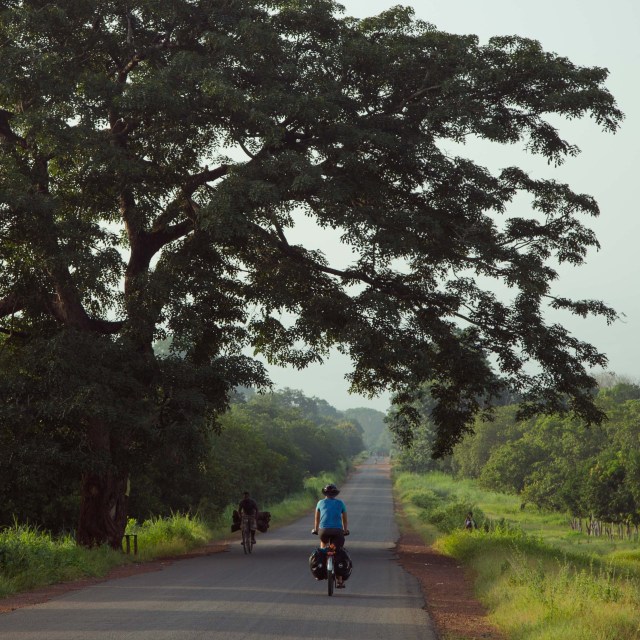
Volunteer for Wildlife Protection for a Sustainable New Year’s Eve
From Jennifer Riley of The Rainbow Route
The more my wife and I travel, the less satisfied we are with trips for the sake of vacation or adventure. As we have seen more of the world, we have realised that we are global citizens who need to nurture the places we visit. There’s no doubt that travel leaves a considerable carbon footprint, so we have become more conscious about using sustainable products and researching ethical tourism before each trip.
For our upcoming trips to the island of Maui, we wanted to help with maintaining the natural beauty that people come to Hawaii to see. After our first trip, where we saw beaches littered with cigarette butts and turtles with huge cancerous tumours, we knew we had to do something more than just lie on the beach and complain. Maui has several volunteer opportunities available to tourists. This year, we will be helping protect turtle nests at night as well as working with Maui Cultural Lands whose aim is to protect and restore Hawaiian cultural resources. Giving back in this way adds a sense of purpose to our travels and helps us feel more connected to the lands we are visiting.
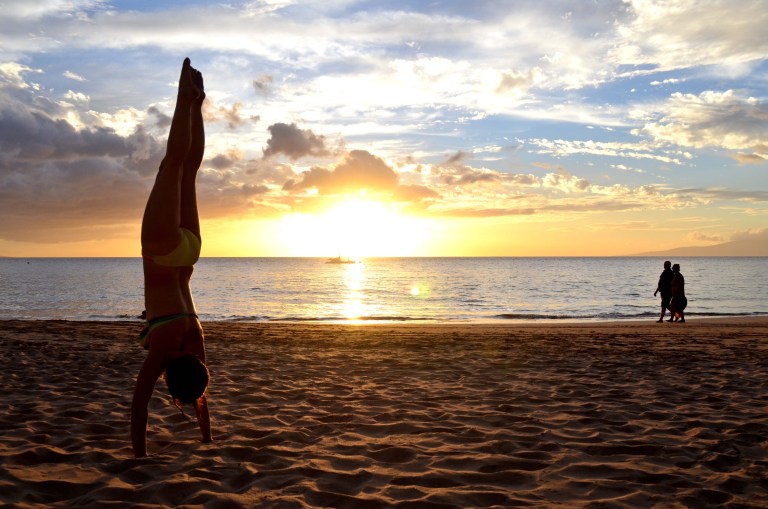
Responsible Accommodation for a Sustainable New Year’s Eve
From Ellie Cleary of Soul Travel Blog
Dreaming of escaping to somewhere exotic for New Year? Bohol, Philippines might just be the perfect Island getaway. Unfortunately The Philippines has been in the headlines for the wrong reasons of late. But across the ocean and miles away from Manila, lush Bohol is quiet, peaceful, and perhaps the closest the Philippines has come to eco-friendly tourism. Set just 3 hours ferry ride from Cebu, Bohol delicately strikes that balance of being accessible, without being too accessible.
During my time there last winter, I was lucky enough to stay at Amorita Resort. Amorita is a luxury, boutique, eco resort that takes its environmental impact and responsibility very seriously. When the resort was developed, instead of causing trees and vegetation to be cut down (as is usually the case for resort development), Amorita was designed around nature, to make the most of the naturally stunning setting. From locally produced and organic products in the rooms, to local recycling awareness days for the staff and their families the resort is doing a lot to give back. They are the ONLY resort to have a waste water treatment system in that area of Bohol – which speaks volumes. Gazing out from Amorita’s infinity pool over the Pacific Ocean as the sky turns pink, while knowing that the resort is doing good, is a feeling not to be missed.
Away from the hotel you can experience the beautiful ecosystem of the Abatan River (I recommend avoiding the very touristic Luboc river cruise which most standard island tours include) and instead support local NGO Process Bohol who are using proceeds from tourism to help fund conservation, spread local awareness of the need to protect the environment, and to train local villagers to become kayak guides. You can even go with them to see the evening fireflies.
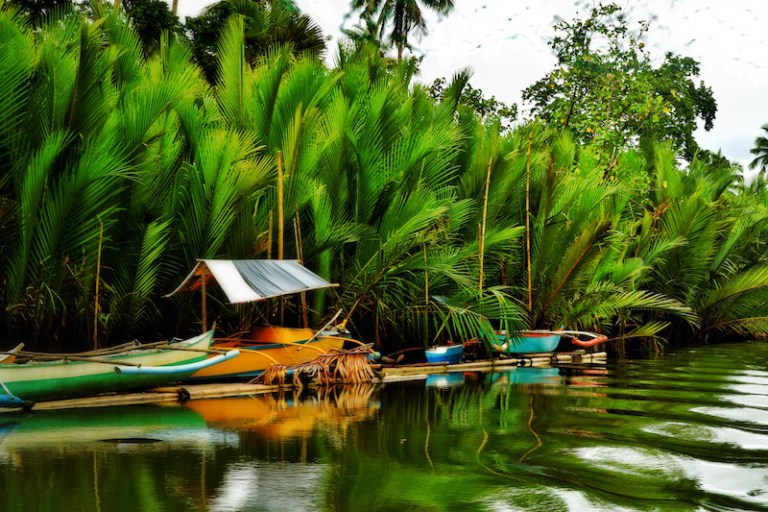
Living sustainably as a New Year’s Resolution
From Nuraini Arsad of Teja on the Horizon
We have such busy lives. It can be hard to pause, find time to take a breath, and space to reflect. Frequent travel doesn’t really help with that.
Isn’t it great then, that a New Year tends to be associated with looking back at what has been, and then looking ahead with resolve? That there usually is space to do that in, with work typically winding down to a lull?
There’s a sustainability habit that I began some years ago, to take advantage of this time and this mood. I figured since I would likely think back on my year, and invariably on my travels too, I could easily do this at the same time to reflect on my carbon debt, and do my carbon offset.
I personally do this at Terrapass, for reasons that I explain here.
For flights, all I need are the departure and arrival airports. For my car, I’d pull out the maintenance record which shows the mileage, and then pro-rate an estimated mileage for the year for my car’s model. And I’d make a best guess for other travel. Do at least this if you’re a frequent traveller, since this will form the lion’s share of your personal emissions.
As the website is US-centric, for home emissions I’d choose an equivalent proxy location for the calculation. Although I have my electricity bills, which note the amount consumed, the location provides the type of power generation. I usually use Florida zip code on the basis that it’s similar in climate to Malaysia and uses predominantly fossil fuel power generation.
Give it a try! It surprisingly costs relatively little to pay your debt – negligible compared to what you’ve spent on the holiday!
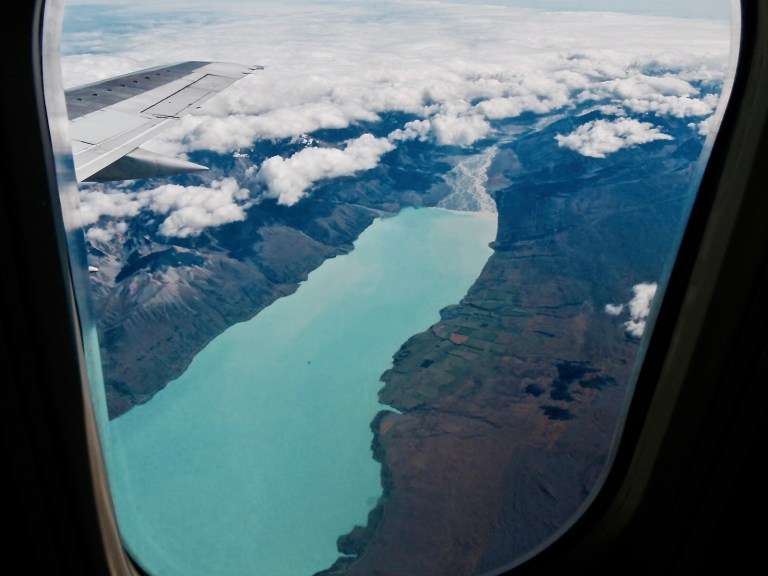
Ethical Wildlife Tourism for Sustainable New Year’s Eve
From Michelle of MichWanderlust
“One simple thing you can do is research your destination or intended activity before you go, especially when it comes to wildlife tourism.
For example, you’re an avid diver and your ultimate goal is to see sharks. You’ve heard that whale shark sightings are guaranteed in Oslob, Philippines. Sounds good, right?
Not really. A quick Google search of “whale sharks Oslob” (as of 4 October 2017) will turn up at least 3 results on the first page listing the reasons why you shouldn’t swim with whale sharks in Oslob. For example, many have sustained injuries from coming too close to the boats. And staying there all year long will affect their migration, and possibly, reproduction patterns.
A bit more Googling about ethical shark dives will reveal ethical alternatives right there in the Philippines, like Donsol.
Another great example of ethical shark tourism in the Philippines is Malapascua. There are very strict rules in place to protect the sharks. Moreover, a portion of the diving proceeds goes to a fund set up to protect and conserve the sharks and the reef.
In this way, you get to enjoy these majestic creatures without hurting anybody.
Across the Pacific Ocean, another example is found in Amazonian port towns where you can cuddle a sloth, dance with an anaconda, or pose with a giant anteater. A bit of background knowledge on animal welfare should immediately set alarm bells off. As a good rule of thumb, when a wildlife encounter crosses the line from observation to interaction, it’s bad for the animals.
Don’t worry, though. Even if you have no luck spotting them in the wild, you can still see these beautiful animals in rescue centers and sanctuaries. Just make sure they’re accredited and reputable.
In Ecuador, I can recommend Amazoonico Rescue Center. The Ministry of Environment sends them confiscated animals and they try to rehabilitate and release them. However, they receive no government funding. They charge a small admission fee, but throw in a free guided tour. If you ask me, that’s money well-spent!
So just take a few minutes before you go anywhere and do some Googling. The animals and the environment will thank you.”
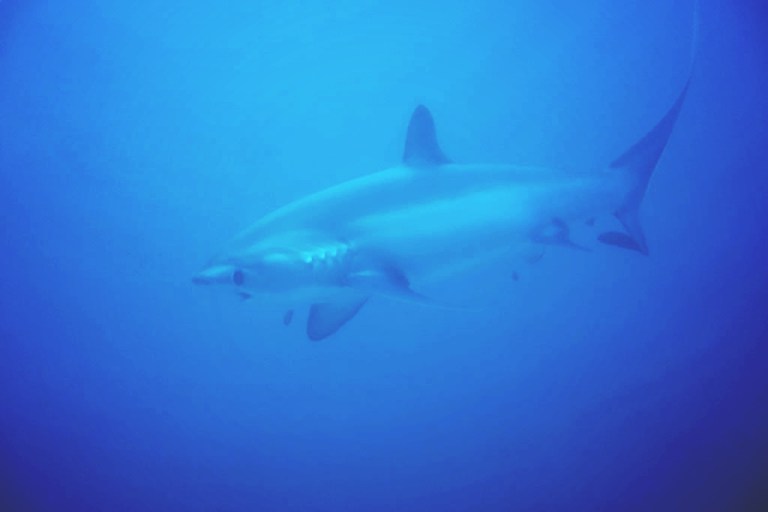
Reducing carbon footprint by Overland Travel
From Maria Aardal of Both-Paths Travelers
Traveling overland is a great way to travel, however it is often overlooked. Traveling overland is exactly what it sounds like. Instead of flying from place to place you travel by local transport such as bus, train and maybe even hitchhiking. Overland travel is sustainable not only because of the positive side for the environment, but also because you support local businesses. It is great to travel and be able to support the locals at the places you travel.
Earlier this year we traveled for 1.5 months in Southeast Asia. We only traveled overland, and it was an amazing experience. While it can be tiring at times, we never regretted it. You get to see the country from a completely different side of a country. When you take local busses and trains you do not only see the touristy spots and the highlights. You also get to see the hidden secrets of a country. You get to see the beautiful countryside. Local transport is also a great way to meet locals. Meeting locals should be a bigger part of traveling than it is today. Is there really any better way to see a country than through the eyes of a local?
As travelers it is our responsibility to travel without causing damage. As traveling is becoming such a huge part of the world, it is important that sustainable traveling gets more attention. Traveling is amazing, and it can open your entire world. It is a incredible way for bringing attention to the positives and negatives of the world. However it also opens for a dark marked. It is our responsibility that we do not encourage that.
Overland traveling is a very different way of traveling, and it is something every traveler should experience.
Volunteering with NGO
From Ketki of Explore with Ecokats
Local NGOs in your own city give a variety of options to sustainably spend the New Year’s Eve. I chose to volunteer with an NGO in the hills of Himachal Pradesh, India for picking up garbage along the hiking route where tourists came to party. As shocking as it was to see the amount of waste generated along the way, the repeated requests to dispose garbage in designated areas fell on deaf ears of trekkers. I picked and packed the garbage as explained by the NGO staff.
It was a liberating experience for me as i did something good for the environment instead of spending money in a fancy club. I plan to continue doing the same with other NGOs located in various places.
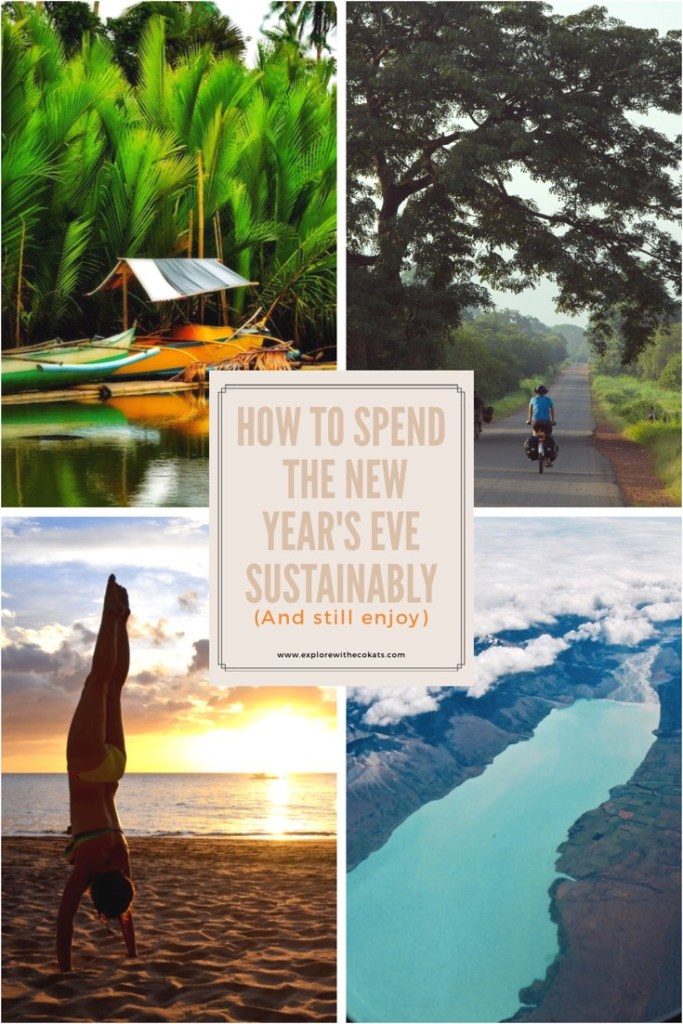

1 comment
This is such a incredible article! Finally I read something wonderful and with meaning! Thank you, Ketki so much! :)))))